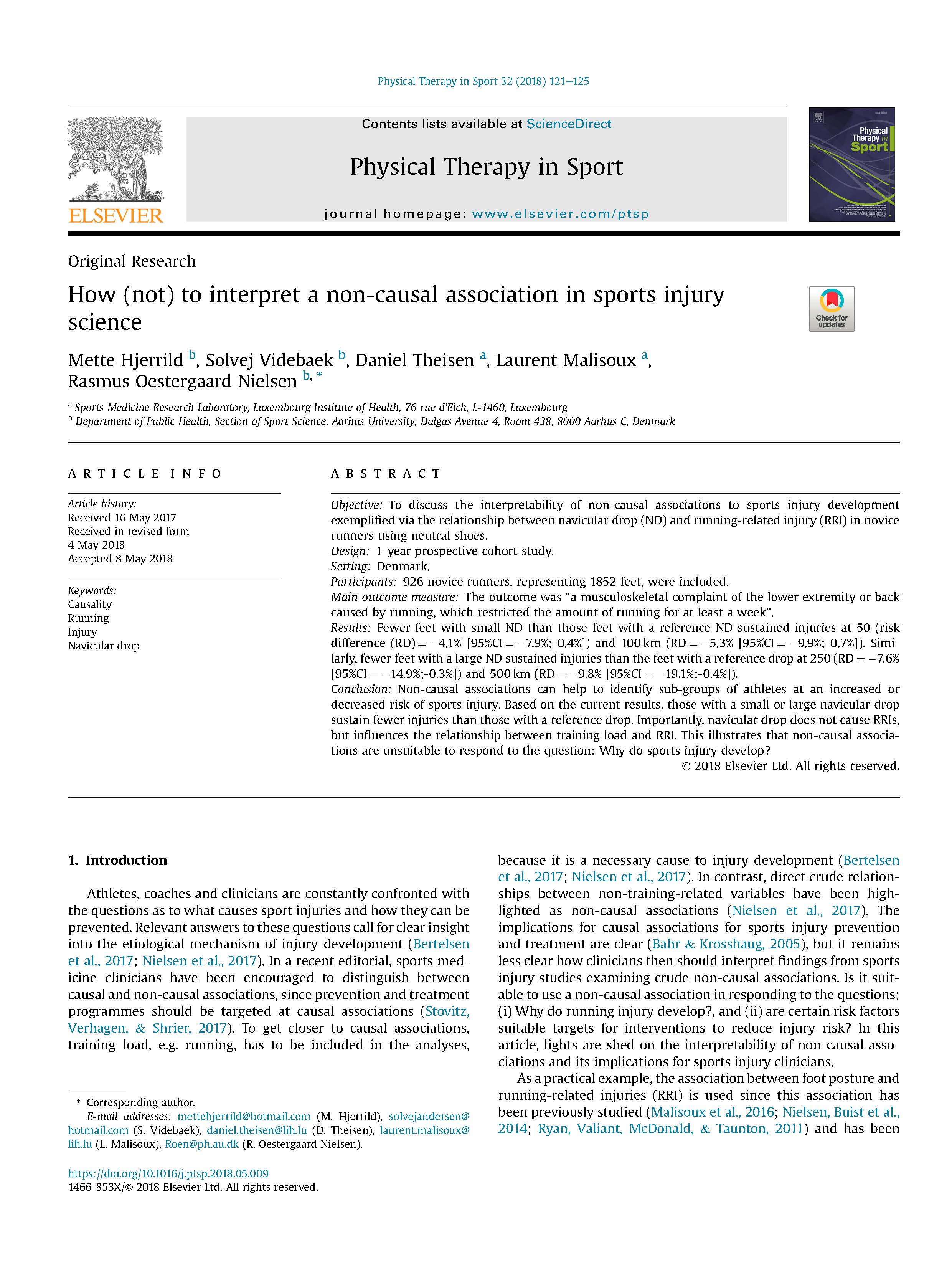New study on interpretations of causal and non-causal associations
RUNSAFE proudly presents a new article published in Physical Therapy in Sport discussing “How (not) to interpret a non-causal association in sports injury research”.

NEW STUDY:
Mette Hjerrild, Solvej Videbæk and Rasmus Nielsen from RUNSAFE have, assisted by Laurent Malisoux and Daniel Theisen from Luxembourg Institute of Health, published a new article entitled “How (not) to interpret a non-causal association in sports injury research” in Physical Therapy in Sport. The article highlights that a non-causal association identifies athletes at higher or lower risk of injury and that a non-causal association in a sports injury science context excludes information on training load. To getting closer to examining causal associations, training load (e.g. number of steps, distance or time spent running) is needed to determine why injury develops.
ABSTRACT FROM THE ARTICLE:
Objective: To discuss the interpretability of non-causal associations to sports injury development exemplified via the relationship between navicular drop (ND) and running-related injury (RRI) in novice runners using neutral shoes.
Design: 1-year prospective cohort study.
Setting: Denmark.
Participants: 926 novice runners, representing 1852 feet, were included.
Main outcome measure: The outcome was “a musculoskeletal complaint of the lower extremity or back caused by running, which restricted the amount of running for at least a week”.
Results: Fewer feet with small ND than those feet with a reference ND sustained injuries at 50 (risk difference (RD)?=??4.1% [95%CI?=??7.9%;-0.4%]) and 100?km (RD?=??5.3% [95%CI?=??9.9%;-0.7%]). Similarly, fewer feet with a large ND sustained injuries than the feet with a reference drop at 250 (RD?=??7.6% [95%CI?=??14.9%;-0.3%]) and 500?km (RD?=??9.8% [95%CI?=??19.1%;-0.4%]).
Conclusion: Non-causal associations can help to identify sub-groups of athletes at an increased or decreased risk of sports injury. Based on the current results, those with a small or large navicular drop sustain fewer injuries than those with a reference drop. Importantly, navicular drop does not cause RRIs, but influences the relationship between training load and RRI. This illustrates that non-causal associations are unsuitable to respond to the question: Why do sports injury develop?
REFERENCE:
Hjerrild, M.; Videbaek, S.; Theisen, D.; Malisoux, L.; Nielsen, R.O. How (not) to interpret a non-causal association in sports injury research”. Physical Therapy in Sport, 2018, vol. 32: 121-125.
LINK TO FULL-TEXT:
Full text of the article can be downloaded here: Physical Therapy in Sport web-page.
